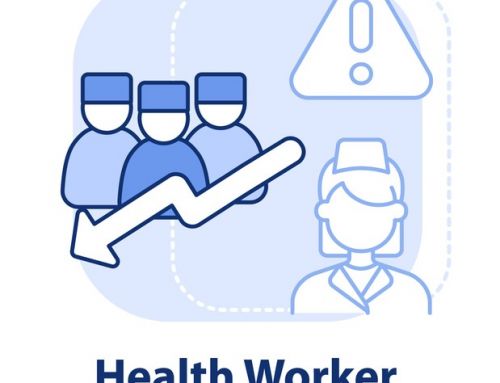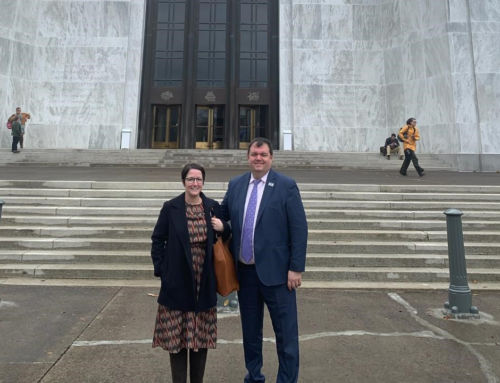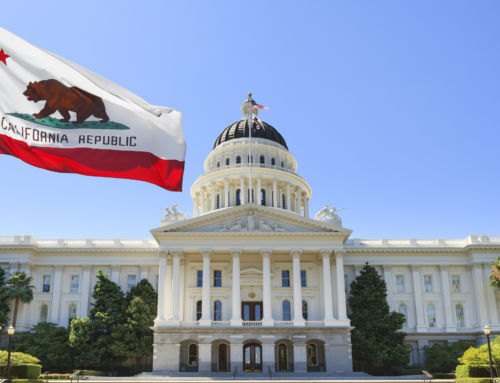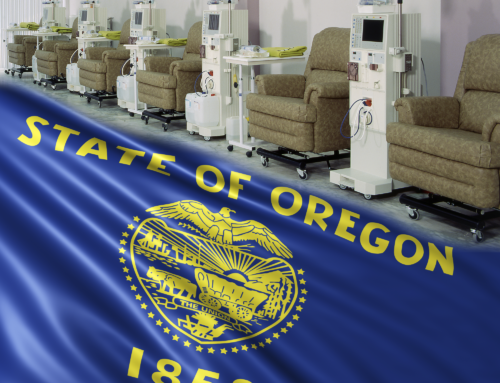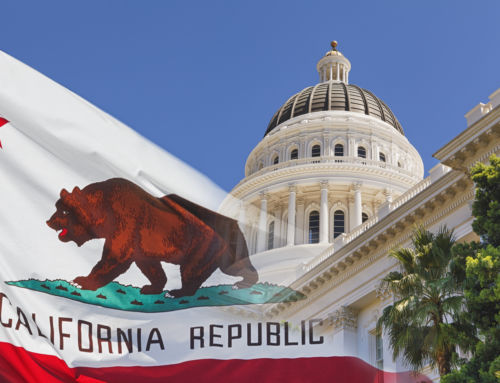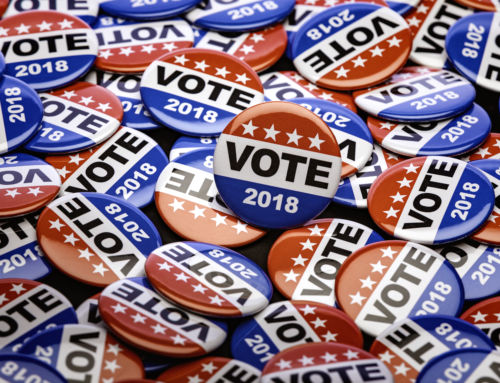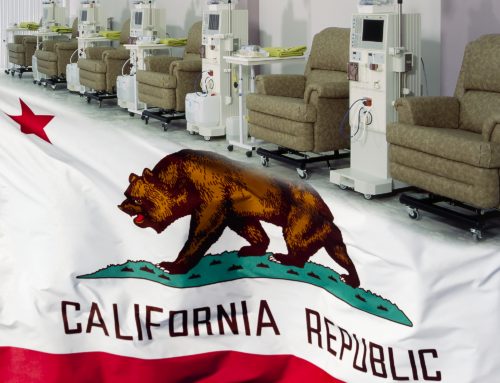Re: CMS-3337-IFC: Medicare Program; Conditions for Coverage for End-Stage Renal Disease Facilities–Third Party Payment
To whom it may concern:
Dialysis Patient Citizens (DPC) writes to offer its comments on the above referenced interim final rule. We are requesting that the Agency withdraw the rule and follow the notice-and-comment rulemaking process prescribed by the Administrative Procedures Act (APA). We explain below why this unusual regulatory action reached an incorrect result.
DPC’s membership is restricted to kidney disease patients and their family members. We have more than 28,000 total members. DPC is a patient-led organization. Its by-laws require that the President, Vice President and at least 51% of the Board be current dialysis patients. For the past several years, the non-dialysis patients serving on the Board have been former dialysis patients with kidney transplants.
Our 2016 Membership Survey found that 87% of our members are on dialysis, that 11% have had kidney transplants, and that 2% have chronic kidney disease (CKD) that is likely to progress to ESRD. This survey also found that the average DPC member with ESRD has been on dialysis for 6.7 years, and that 19% have been on dialysis for more than 10 years. One-third of our members who have not received transplants are on a transplant waiting list. The average waiting time for a transplant is between 3 and 7 years.
Fifty-three percent of our members are white, 30% are African-American, and 4% are Hispanic. Fifty-two percent are retired, and 26% are unemployed. That is to be expected, since although there have been advances in dialysis treatment in recent years, dialysis for most people remains a process that saps their energy and makes it very difficult to hold a full-time job. As a result, a large proportion of our members have very little income. Two-thirds have received some form of financial assistance to help make ends meet, including Social Security Disability payments, food stamps, pharmaceutical assistance programs, and charitable assistance.
Depending on their economic status, age, where they live and other factors, DPC members may have multiple insurance options to choose from, including Medicare—whether or not they’re over 65—Medicaid, and, since the guaranteed-issue and non-discrimination provisions of the Affordable Care Act took effect in 2014, private coverage. Twenty-three percent of DPC members with ESRD have received funding to help pay their premiums, including premiums for both Medicare and private coverage, from the American Kidney Fund (“AKF”).
The Interim Final Rule contains two parts. The first part requires dialysis companies to explain to dialysis patients their various insurance options, the coverage each option provides, and what it will cost the patient; to explain whatever premium assistance may be available for private coverage; and to disclose the payment the company would receive from the insurer if the patient elects private coverage.
DPC generally supports the disclosure concepts contained in the IFR. We believe that it is in the best interests of ESRD patients to receive comprehensive information about their insurance alternatives, and also about the compensation providers will receive if the patient elects each alternative. Notably, the rates the insurers negotiate with the dialysis companies are higher than those the government sets for Medicare and Medicaid. As a result, dialysis companies have an economic incentive to have dialysis patients covered by private insurance. Conversely, insurers have an economic incentive to disenroll dialysis patients, or to avoid insuring them in the first place, because dialysis patients cost them a great deal of money.
I. Adoption of this IFR violated the Administrative Procedures Act, and the regulation should be withdrawn.
The APA requires an agency seeking to promulgate a substantive rule to do so through notice-and-comment procedures. 5 U.S.C. § 533. The Medicare Act imposes the same requirements. 42 U.S.C. § 1395hh(b)(1). Under those procedures, an agency must publish a notice of proposed rulemaking in the Federal Register, and the notice must include “the terms or substance of the proposed rule or a description of the subjects and issues involved.” 5 U.S.C. § 553(b). An agency must also give interested parties an opportunity to submit “written data, views, or arguments.” Id. § 553(c). After “consideration of the relevant matter presented,” the agency publishes a final rule. Id. The APA typically requires that a final rule may not be effective until 30 days pass from publication. Id. § 553(d).
These requirements ensure accountability, well-reasoned agency decisionmaking, and “fairness and mature consideration of rules of general application.” Brown Exp., Inc. v. United States, 607 F.2d 695, 701 (5th Cir. 1979).
There are exceptions to notice-and-comment requirements, but given the requirements’ importance to the rule of law, the exceptions are narrow. An agency may dispense with the requirements for “good cause,” which exists only when notice-and-comment would be “impracticable, unnecessary, or contrary to the public interest.” 5 U.S.C. § 553(b)(3)(B); id. § 1395hh(b)(2)(C). This exception is “read narrowly,” however, “to avoid providing agencies with an ‘escape clause’ from the requirements Congress prescribed.” United States v. Garner, 767 F.2d 104, 120 (5th Cir. 1985); Texas v. United States, 809 F.3d 134, 171 (5th Cir. 2015). Otherwise, the good-cause exception would “carve the heart out of the statute.” Action on Smoking & Health v. CAB, 713 F.2d 795, 800-801 (D.C. Cir. 1983).
Notice-and-comment requirements play a particularly important role during transition periods between presidential administrations of different political parties. Outgoing administrations often have substantial incentives to engage in “midnight rulemaking”—attempting to rush through significant regulatory changes consistent with their own political objectives or policy views before a new administration, with different goals and perspectives, comes to power.
The timing of this “emergency” rulemaking is suspect for several reasons. First, the Agency, after an election, peremptorily suspended notice-and-comment to make a rule effective before Inauguration Day. Second, an “emergency” in the context of regulation of Qualified Health Plans under the ACA would best be described as one driven by the annual cycle leading up to a plan year, including the rate filing/approval deadline and the open enrollment period. If the purpose of this measure was to stabilize the individual insurance market for the 2017 plan year, emergency rulemaking might have been justified if the rule had been released several months ago, before final decisions were made by issuers about plan offerings and rates. Instead, the rule was released in the middle of open enrollment for coverage beginning January 1, 2017. Finally, by releasing the rule just three days before the scheduled end of open enrollment, Agency officials intended to force immediate decisions by patients in an environment of uncertainty and fear, with the expectation that ESRD patients would elect public coverage as a safe port in the storm that the rule created.
A. The timing of the IFR was unfair to ESRD patients.
Had the Agency wanted to observe procedural regularity, it had two rulemaking vehicles it could have used to regulate on this issue in compliance with the Administrative Procedures Act. The annual ESRD payment rule, which is proposed each July and finalized each October for the following year, is the vehicle ordinarily used to revise Conditions for Coverage. The exchange Benefit and Payment Rule, which is proposed in the fall and finalized in the spring for the following calendar year, would be the appropriate vehicle for insurance regulation. Either vehicle affords stakeholders a right to notice and comment. Instead, CMS issued a Request for Information that was, by its own admission, based upon anecdote and indeed the most inflammatory and unrepresentative anecdote that the insurance industry was able to recount; followed by an Interim Final Rule to take effect in 30 days.
The Agency has deployed an oblique legal maneuver to produce an outcome that would be unlawful if attempted directly. It has declined to issue a direct regulation of the insurance market, instead opting to influence the market through a regulation of dialysis clinics. These conditions of participation in the Medicare program are intended to set minimum standards for quality and patient safety; it is unprecedented for them to be used as a Trojan horse to circumvent patient protections. We believe the Agency executed this somersault because, as we demonstrated in our letter commenting on the RFI, any direct regulation ousting ESRD patients from their health plans would violate numerous statutory provisions relating to commercial insurance and, as the Medicare Rights Center demonstrated in its comment letter, would also violate the Social Security Act.
The Conditions for Coverage only regulate one type of entity, dialysis clinics. But in imposing a requirement that clinics “obtain assurance from the issuer that the issuer will accept such payments,” CMS has cynically signaled to insurers that it will not enforce guaranteed issue or non-discrimination mandates. To be clear, our position is that under guaranteed-issue and non-discrimination provisions enshrined in federal law, insurers have no right to withhold this assurance. But as a practical matter, the Agency timed this exercise of raw, extralegal power to make it impossible to vindicate patients’ rights for the 2017 plan year.
The announcement at close of business on December 12 came three days before the end of open enrollment for exchange plans and 13 business days before the end of Medicare open enrollment. Practically speaking, the regulation took effect immediately, not at the end of 30 days. In timing the release thusly, the Agency pre-empted any opportunity for legal challenge on behalf of patients who were satisfied with their 2016 coverage and wished to retain it for 2017. Further, the Agency deployed a head fake by composing a misleading description of this rule for posting on the OMB docket, leaving the public utterly unprepared for the chaos it intended to unleash. Finally, coming so late in the cycle, it can produce none of the benefits for healthy consumers that insurers have claimed would come from excluding sick consumers: some insurers have already left the individual market, and 2017 premiums are already set. The only winners here are insurers, who stand to reap a windfall.
B. The IFR directly contradicts guidance that CMS published after the Affordable Care Act (“ACA”) was enacted in March 2010, which patients have relied upon.
It is fundamentally unfair for CMS to now adopt a policy–and even more so to adopt it, as CMS has in the IFR, through multiple end-runs–that penalizes DPC and its members for following exactly the advice CMS has given it. A few examples follow.
CMS guidance makes clear that ESRD patients who are eligible for Medicare also have the option of private insurance
In a publication intended for ESRD patients that was updated only a few months ago, the Agency stated unequivocally that “Individuals with ESRD are not required to sign up for Medicare; it is voluntary.” CMS, “Medicare Coverage of Kidney Dialysis & Kidney Transplant Services” (rev. May 2016), available at https://www.medicare.gov/Pubs/pdf/10128-Medicare-Coverage-ESRD.pdf.
Further, the Agency has made a point of reminding insurers that ESRD patients are not required to sign up for Medicare. CCIIO, Final 2016 Letter to Issuers in the Federally-facilitated Marketplaces (Feb. 20, 2015), at 36, available at https://www.cms.gov/CCIIO/Resources/Regulations-and-Guidance/Downloads/2016-Letter-to-Issuers-2-20-2015- R.pdf.
HHS has also made clear that ESRD patients can obtain both private coverage and Medicare, and that doing so can reduce the patient’s costs: the booklet Financial Help for Treatment of Kidney Failure, published in June 2014 (NIH Publication No. 14-4765), at page 5 informs ESRD patients that “Having Medicare Part B plus another health plan can limit what a person pays out-of-pocket for health care.”
CMS guidance makes clear that Medicaid-eligible ESRD patients are also eligible for private coverage as long as they forego government subsidies
In a Frequently Asked Question document posted on the CMS website, CMS states that “qualified individuals who are Medicaid or CHIP eligible” are “not eligible to receive advance payments of premium tax credits or cost-sharing reductions” if they buy on the Exchange, but that they “are allowed to purchase qualified health plans instead of receiving coverage through the Medicaid or CHIP programs.” See CMS, Frequently Asked Questions on Exchanges, Market Reforms, and Medicaid (December 10, 2012), available at https://www.cms.gov/CCIIO/Resources/Files/Downloads/exchanges-faqs-12-10-2012.pdf.
Nevertheless, by signaling to insurers that they may refuse to accept third-party payment, the IFR would preclude ESRD patients who are eligible for both private coverage and Medicaid from obtaining private coverage. It would force them to rely exclusively on Medicaid, even when private coverage would provide them with more extensive benefits than would Medicaid alone.
HHS has told ESRD patients who can not afford to pay private insurance premiums that the AKF may be able to pay those premiums for them, and has encouraged them to contact the AKF
The National Institutes for Health (NIH), an HHS Operating Division, tells insureds at its website that “The American Kidney Fund has grants to help pay health plan premiums. A social worker can help a person apply for assistance.”
The NIH booklet Financial Help for Treatment of Kidney Failure is even more expansive and encouraging regarding AKF funding for ESRD patients. At page 9, it contains the following language:
“What private organizations can help? Private organizations include charities and foundations. A few exist specifically to help people with kidney disease and kidney failure, such as the American Kidney Fund. The American Kidney Fund gives small grants to U.S. dialysis and transplant patients based on need. The American Kidney Fund has grants to help pay health plan premiums. A social worker can help a person apply for assistance. The American Kidney Fund depends on donations, so there may be times when funds are low. More information can be found at www.kidneyfund.org.”
The CMS Patient Rights documents also emphasize that patients must be told about any financial assistance available to them. CMS, “Dialysis Facility Patient Rights,” available at https://www.medicare.gov/dialysisfacilitycompare/#resources/patients-rights.
The IFR would prevent dialysis patients from receiving assistance from AKF to pay their premiums even though HHS has consistently encouraged dialysis patients to obtain assistance from AKF to pay their premiums. That is fundamentally unfair.
Notice-and-comment rulemaking under the APA requires federal agencies to provide the public with an opportunity to comment on the rule, to then consider the comments, and finally to “incorporate in the rules adopted a concise general statement of their basis and purpose.” 5 U.S.C. § 553(c). An agency must “respond in a reasoned manner to the comments received, to explain how the agency resolved any significant problems raised by the comments, and to show how that resolution led the agency to the ultimate rule.” Action on Smoking & Health v. CAB, 699 F.2d 1209, 1216 (D.C.Cir.1983). “A statement of a rule’s basis and purpose is inadequate if it does not respond to significant public comments.” Ohio Valley Environmental Coalition V. Hurst. United States District Court, S.D. West Virginia. 604 F. Supp.2d 860 (S.D.W. Va. 2009) “The APA guarantees the public an opportunity to comment on proposed rules. That opportunity is meaningless unless the agency responds to significant points raised by the public.” Ala. Power Co. v. Costle, 636 F.2d 323, 384 (D.C.Cir.1979)).
We believe that the outcome of this rulemaking would have been different had the Agency responded to public comments. In this instance, a Request for Information spurred by an anecdote related by an insurance company was followed by a decision driven by anecdotes from four social workers. Comments submitted by DPC and numerous other stakeholder in response to the RFI have not been acknowledged or addressed.
II. In substituting a Request for Information in place of proper Notice-and-Comment Rulemaking, the Agency disregarded its duty to respond to public comments, leading to a poorly reasoned decision. Specifically, the IFR’s discussion of potential patient harm is superficial, one-sided, and inadequately addresses the benefits to ESRD patents of access to private coverage.
The IFR prohibits any dialysis company participating in Medicare or Medicaid–which as a practical matter is all dialysis companies–from paying the health insurance premiums of ESRD patients, or contributing to any organization that does so such as AKF, unless the patient’s insurance company agrees to accept such payment. Because insurers have a strong economic incentive to avoid dialysis patients, and because the rule permits insurers to reject payment by dialysis-company-funded organizations like AKF on behalf of dialysis patients at any time and for any reason, the second part of the rule was expected result in the elimination of AKF funding of private coverage for dialysis patients. Even before the IFR took effect, numerous patients who had relied on AKF funding for private insurance and who cannot afford to pay their premiums themselves lost health insurance that they were satisfied with.
The Agency asserted that the IFR was necessary to protect patients from three types of harm: reduced access to transplant, increased out-of-pocket costs, and mid-year disruptions to patient care. But the Agency reached these conclusions only by disregarding many facts communicated by stakeholders during the RFI process and by failing to weigh the competing interests
A. The Agency’s finding of risk to “transplant readiness” disregards facts and fails to weigh competing considerations.
In asserting that private coverage risks ESRD patients’ “transplant readiness,” the IFR echoes comments from four social workers who report that unspecified transplant centers prefer to work with patients who are continually covered by Medicare than privately insured patients who enroll in Medicare at the time of their transplant. These commenters did not speak on behalf of, or identify, these transplant centers so the Agency relied solely on their representations in assessing such risks. Other commenters with experience and expertise in this area will be rebutting the proposition that commercially insured ESRD patients are disadvantaged in obtaining transplants. The principal point we would like to emphasize here is that in emphasizing continuity of coverage during the transition from dialysis to transplant, the Agency disregarded the importance of continuity of coverage during the transition from chronic kidney disease to end-stage frenal disease.
The IFR gives insurers a financial incentive to accelerate the deterioration of the health of their low-income insureds with kidney disease rather than to prevent that deterioration. That is because patients with ESRD, but not CKD before it progresses to ESRD, qualify for Medicare.
Under current statutory regime—which the Agency, in the IFR, signals it may no longer enforce—private insurers must continue to cover patients with ESRD for 30 months after they qualify for Medicare.1 To avoid paying for 30 months of dialysis treatments, therefore, under current law the insurer has an incentive to keep its insureds with CKD as healthy as possible for as long as possible. Low-income patients on dialysis, however, can pay their premiums only through the assistance of the AKF. If the insurer can refuse to accept such payment, the insurer can jettison any of its low-income patients as soon as they are diagnosed with ESRD, thus making Medicare solely responsible for the cost of 30 months of dialysis treatments. Were the IFR to take effect, therefore, it would be in the insurer’s interest to have the health of its low-income patients with CKD decline to ESRD status as soon as possible, so that the insurer can get them and their costs off its books as soon as possible.
Moreover, the IFR would create an incentive for insurers to deny coverage for effective but expensive procedures not just to its low-income insureds but to potentially all its insureds with kidney disease. That is because even CKD patients who can today pay their premiums themselves because they work full time are likely not to be able to afford to do so if their health declines and they are forced to go on dialysis and can no longer work full time. Data from our October 2016 Membership Survey bear this out: 55% of DPC members were employed when they started on dialysis, but only 8% of those now on dialysis are still employed full-time, with another 6% working part-time. Thus, an employed CKD patient with the means to pay his premiums himself may well become an unemployed ESRD patient without the means to pay his premiums once his kidneys fail. The IFR thus creates a system where insurers have an incentive to establish a two-track system of care: one for people who will be able to pay their own premiums after their kidneys fail, and one for those who won’t.
Patients with kidney disease are particularly vulnerable when their insurer’s economic interest conflicts with their own interest in maximizing their health status, because procedures are available that can minimize the adverse effects of dialysis or even avoid dialysis entirely, but they are very expensive. For example, the research clearly shows that patients with declining kidney function who receive pre-emptive kidney transplants–transplants before they need to go on dialysis–have better outcomes than those who receive post-dialysis transplants. They are less likely to reject the kidney; have a higher survival rate; are more likely to avoid infections; and can avoid the dietary restrictions and health complications of dialysis. It is clearly in such a patient’s interest, therefore, to obtain a pre-emptive transplant. With the IFR in effect, however, the insurer would have a strong economic incentive not to approve such a transplant for a patient who is likely to need financial assistance to pay his premiums–which according to our Membership Survey includes the large majority of patients on dialysis. Instead, it would have an incentive to allow the patient’s condition to deteriorate until he must go on dialysis, at which point he qualifies for Medicare. With the patient unable to pay his private insurance premiums without financial assistance, Medicare would pay for the transplant and the private insurer would be absolved from doing so.
Dialysis providers and insurers have opposite economic incentives regarding patients with kidney disease. Dialysis companies have an economic interest in getting paid as much as possible for treating dialysis patients, and insurers have an economic interest in avoiding dialysis patients entirely and in disenrolling them if they happen to end up with them. Dialysis providers and insurers also have opposite incentives regarding the longevity of dialysis patients: dialysis providers have an interest in keeping dialysis patients alive because they get paid as long as they’re alive, whereas insurers have the opposite interest because they must make payments on behalf of the dialysis patients they insure while they’re alive, up to 30 months. An insurer’s incentive not to maximize the lifespan of its insured exists with respect to any patient on whose behalf the insurer pays out in claims more than it takes in in premium–that is an unavoidable effect of our health insurance system. But rather than seeking to minimize that incentive, the IFR exacerbates it. That doesn’t mean than every insurer will seek to accelerate the decline of every patient with kidney disease who cannot afford to pay his own health insurance premium. But it does necessarily make that type of behavior more likely.
The IFR states that “theoretically, individuals could arrange for Medicare coverage to begin at transplantation, thereby demonstrating continued access to care.” That coverage arrangement is not theoretical—in fact, it happens with regularity. The IFR continues: “In practice, however, patients struggle to understand their coverage options and rapidly navigate the Medicare sign-up process during a period where they are particularly sick and preparing for major surgery.” The fallacy with this assertion is that the timeline envisioned by the IFR—Medicare enrollment at the beginning of the fourth month after kidney failure—is no less a struggle for sick patients. When Medicare enrollment takes place at the time of transplantation, the interests of all parties—patient, commercial insurer, dialysis provider, transplant center, and Medicare—are aligned to assure smooth transitions of coverage and care. But financial interests do not converge during the transition from CKD to dialysis, and incident patients are more physically vulnerable than those who have stabilized sufficiently to undergo transplant surgery.
B. The Agency’s finding of risk to Medicaid-eligible patients disregards facts and fails to weigh competing considerations.
The IFR notes that there is potential risk to Medicaid-eligible patients in obtaining Exchange coverage. We acknowledge that this practice is controversial and agree that it should be used prudently and rarely. But the IFR overstates the risk to patients and fails to note offsetting advantages that ESRD patients may obtain from commercial coverage.
The IFR states that “Medicaid would, in theory, wrap around the individual market plan.” Again, our understanding is that a practice the IFR assigns to the “theoretical” realm occurs regularly. The IFR then states that it is difficult for ESRD patients “to coordinate multiple types of coverage.” This statement is disingenuous, as coordination of primary and secondary coverages is part of nearly every Medicare beneficiary’s life.
Less than half of all primary care physicians accept new Medicaid patients–44%, according to the Kaiser Family Foundation–and even fewer specialists accept new Medicaid patients, since Medicaid pays them so much less than either private insurance or Medicare. Dialysis patients often need multiple specialists, including nephrologists, vascular surgeons, and cardiologists. ESRD patients may need the immediate attention of a vascular surgeon to create or repair their access site lest they suffer infection—this factor alone could suffice to outweigh other considerations in judgment of a fully-informed patient.
C. The Agency’s finding of risk to Medicare-eligible patients is not supported by its own recital of facts.
The IFR’s discussion of ESRD patients with Medicare eligibility is a muddle of murky logic. It acknowledges that Medicare has no out-of-pocket limit, while private coverage does; and that in 23 states ESRD patients under the age of 65 do not have a right to purchase a Medigap policy–a policy paying some of the costs that Medicare does not cover–so in those states under-65 ESRD patients will have unlimited liability for the 20% of their costs that Medicare does not cover. Because ESRD patients not only must undergo dialysis but also often have such conditions as diabetes, anemia, hypertension, and congestive heart failure, under-65 ESRD patients on Medicare in states where they cannot buy Medigap will likely be unable to afford to pay the 20% that Medicare does not cover. As a result, both their finances and their health are likely to deteriorate.
Fee-for-service Medicare and commercial managed care are qualitatively different as well. For instance, we know of at least two ESRD patients who also have Type I diabetes and use the OmniPod insulin pump, a medical device that is not covered by Medicare. Their commercial plans covered the device. Commercial plans have a financial incentive to be flexible in covering services likely to reduce complications; Medicare is not as nimble. We know of commercial plans that cover, for example, case managers and nutritional supplements for ESRD patients, to name two other services absent from FFS Medicare.
To minimize the benefits to ESRD patients of retaining commercial coverage, the IFR mobilizes straw men: patients “may” be liable for late enrollment penalties or higher cost sharing for immunosuppressive drugs if their Medicare enrollment is botched. The Agency apparently conducted no inquiry into how typical these circumstances are; our understanding is that gaps are rare. Similarly, the IFR suggests that consumers are not capable of comparison-shopping to ascertain whether providers they are likely to use are outside of the network of their exchange plan. This suggestion contradicts a key premise underlying both the Affordable Care Act and proposed alternatives to the ACA: that consumers are capable of, and should be encouraged to engage in shopping for insurance coverage, and that their collective choices are necessary for a vibrant insurance market.
The IFR also compares average 2014 expenditures for ESRD patients in commercial plans to those covered by Medicare and concludes that overall costs for Medicare patients are lower. It may be the case that this was true in 2014, but a University of Texas study that examined Medical Expenditure Panel Survey (MEPS) data for ESRD patients in the survey panel from 2002 to 2011 found overall expenditures were lower for commercially insured dialysis patients than for those insured by public programs.2 The Agency gave no consideration whether the 2014 expenditure snapshot accurately reflected the ability of managed care techniques to lower costs.
D. The Agency’s finding of risk of mid-year disruption in coverage disregards facts and fails to weigh competing considerations.
The IFR claims that third-party payment exposes ESRD patients to “a significant risk of a mid-year disruption in health care coverage.” Here the IFR refers to the illegal practice of insurers attempting to disenroll ESRD patients by reason that third party payment of premiums violate the insurer’s own self-serving policy of refusing them. First, it is our understanding that as of this time, no mid-year disenrollments have been completed. We know of at least four states, Louisiana, North Carolina, California and Indiana, that have prohibited refusals to accept premium payments from AKF. Several other states’ regulators appear to have informally intervened with insurers last year to prevent such disruptions.
Indeed, the IFR only aggravates the situation that could produce disruption, by empowering the insurer to veto third-party payment. HHS could have prevented the disruption the IFR is creating and could have eliminated harm to ESRD patients by requiring the insurer to accept third-party payment.
An argument that the possibility of mid-year coverage disruptions delegitimizes a type of coverage is an argument that proves too much. No insurance program or product carries a greater risk of mid-year disruption than Medicaid, the expansion of which to childless adults is the cornerstone of the Affordable Care Act. Because Medicaid eligibility fluctuates during the calendar year in accordance with fluctuations in income, Medicaid enrollees are uniquely vulnerable to “churn” and disruption of coverage, yet no one would suggest that this characteristic of Medicaid puts its enrollees at “risk of harm.” Here again, the flaws in reasoning that underlie the IRF are visible in the poorly thought-out and casually thrown-out arguments offered to support it.
III. The IFR fails to acknowledge, nor give weight to, insurers’ interest in avoiding sick patients and actions to shift patients to public programs.
The Agency has insisted on a one-sided portrayal of the dispute over charitable assistance as one of patients being “steered” by dialysis providers when it would be more accurate to say they are subject to a “tug of war” in which insurers are forcefully intervening to shift them to public programs. In our comments on the RFI we exhibited some of the communications that insurers send to ESRD patients to cajole, or intimidate, them into enrolling in public programs. It is unfortunate that the IFR prescribes no regulation over insurance company attempts to drive “crowd out” of private insurance, which are not limited to the individual market under the ACA. We would reiterate that it has been federal policy since 1981 to maintain all-payer support for the care of ESRD patients. The insurance industry is engaged in a campaign of massive resistance to this policy; the IFR was a victory for them in this battle.
It is said that “hard cases make bad law.” In this case, the Agency gave into temptation, in the face of hardships reported by insurers, to extend them sympathy at the expense of dialysis patients and at the expense of the rule of law. The purpose of insurance is to spread risk. Guaranteed issue and non-discrimination provisions were enacted to buttress this risk-spreading function. The Agency has accepted a specious argument and permitted charitable assistance to effectively serve as a proxy for a pre-existing condition, thereby creating the first exception to these laws. Anyone is at risk for kidney failure; we know of patients who lost their kidneys due to such random causes as reaction to contrast dye injected during an angiogram; reaction to use of ibuprofen to treat migraines; and reaction to quinine in tonic water. Only by vindicating the rights of current ESRD patients can future, unsuspecting patients be protected.
IV. Conclusion
As of January 1, thousands of dialysis patients who were satisfied with their insurance coverage lost their health plans with a mere two weeks’ notice. Many of these patients will be enrolled in Medicare but will not have access to Medigap supplements, jeopardizing their status on transplant lists.
This intemperate and lawless rulemaking should be rescinded. In the alternative, we ask that the Agency mitigate the damage it has caused by clarifying that insurers may not withhold assurance that it will cover ESRD patients in the absence of probable cause that the new notification requirements are being violated. We believe that this is an accurate statement of the application of other federal and state laws that remain in force after promulgation of the IFR.
Thank you for your consideration of our comments and concerns. If you have any questions or would like additional information, please do not hesitate to contact me or our Government Affairs Director Jackson Williams.
Sincerely,
Hrant Jamgochian, J.D., LL.M.
Chief Executive Officer




